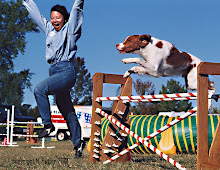Cognitive Dysfunction Syndrome (CDS) is a form of dementia in older dogs. Some of the clinical symptoms include:
- Disorientation: Wanders aimlessly, gets lost in a familiar house or yard, gets "stuck" in corners or under/behind furniture, stares into space, stands at the hinge side of the door to be let out, does not recognize familiar people, does not respond to his name, forgets why he went outside.
- Decreased interaction with family members: Seeks less attention, walks away while being petted, less enthusiasm upon greeting, or fails to greet family members at all.
- Altered activity and sleep patterns: Flipping of day/night activity/sleep cycles, increased wandering/pacing, vocalization (particularly at night) for no reason.
- Lapse in housetraining: Urinates indoors, has accidents inside soon after being outside, does not ask to go outside.
Many of these clinical signs appear very gradually - so much so that the owner is often unaware of the early subtle changes in behavior.
What causes CDS? Beta-amyloid is a protein toxic to neurons that accumulates in the aging brain; it may form plaques. This is similar to findings in the brains of human Alzheimer's patients. The exact role of beta amyloid accumulation in the development of cognitive dysfunction is not yet known, but its accumulation seems to lead to decreased neuronal function in the brain.(1)
Neurotransmitters are also altered during aging. Monoamine oxidase B (MAOB) is an enzyme that has been found to have increased activity in older dogs (2). In dogs with CDS, the increase is even greater than what is considered for a normal aging change. MAOB breaks down dopamine, a neurotransmitter. In humans, dopamine affects brain processes that control movement, emotional response, and ability to experience pleasure and pain. Also, metabolic processing of dopamine results in release of cell-killing free radicals.
A study at the University of California-Davis found that 62% of 11- to 16-year-old dogs showed signs in at least one category of CDS (3, 4).
CDS can make a dog's life lonely, separated from family members who cherish their older dog's companionship. It can be as hard on family members as it is on the dog.
Coming up next.. Part II: Treatment
References:
1. Cummings BJ, Head E, Afagh AJ, Milgram NW, Cotman CW: Beta-amyloid accumulation correlates with cognitive dysfunction in the aged canine. Neurobiol Learning & Memory 1996 Vol 66 (1) pp. 11-23.
2. Campbell S, Trettien A, Kozan B: A noncomparative open-label study evaluating the effect of selegiline hydrochloride in a clinical setting. Vet Ther 2001 Vol 2 (1) pp. 24-39.
3. Neilson JC, Hart BL, Ruehl WW: Cited in Hart BL, Hart LA: Selecting, raising and caring for dogs to avoid problem aggression. JAVMA, 210(8):1129-1134; 1997.
4. Ruehl WW, Hart BL: Canine Cognitive Dysfunction. In Psychopharmacology of Animal Behavior Disorders (Dodman NH, Schuster L, eds.). Boston: Blackwell Scientific, 1998; pp. 283-304.
